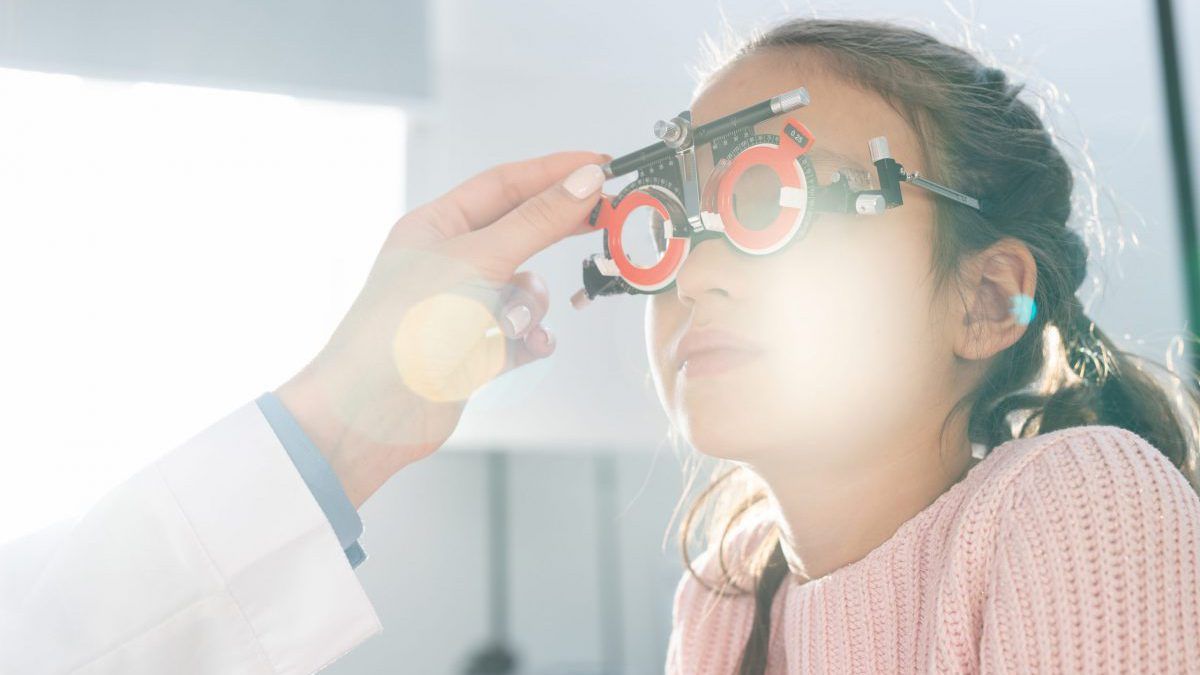Science
What is the effect of uncorrecting, undercorrecting and overcorrecting myopia in children?

In this article:
Paper title: Role of un-correction, under-correction and over-correction of myopia as a strategy for slowing myopic progression
Authors: Nicola S Logan (1), James S Wolffsohn (1)
1: Aston Optometry School, Aston University, Burmingham, UK
Date: 2020
Reference: Logan NS, Wolffsohn JS. Role of un-correction, under-correction and over-correction of myopia as a strategy for slowing myopic progression. Clin Exp Optom. 2020;103(2):133-137 [Link to abstract]
Summary
This systematic review of 9 studies investigated the association between un-, under and over-correction of myopic refractive error and myopia progression in children aged up to 18 years. No beneficial effect of under-correction was reported, with some studies reporting an increase in myopia progression. 2 studies reported no significant difference in progression between children that were under-corrected versus those with full correction, while 4 studies reported faster progression in children that were under-corrected. A number of retrospective studies suggest myopia is greater and/or progresses faster in children who were under-corrected versus those who were fully corrected.
Similarly, no benefit of over-correction was found; however, heterogenous conclusions were observed in uncorrected myopia. A case control study suggests myopia progression is slowed in those who are uncorrected versus fully corrected, while another study suggested the opposite. Due to the unequivocal evidence and known visual impairment associated with uncorrected myopia (impact on education, productivity, independence), the authors do not recommend uncorrecting myopia. The evidence regarding monovision correction and single vision spectacles is equivocal.
There is no strong evidence of benefits from uncorrected, monovision or over-correction of myopia, and hence current clinical advice advocates for the full correction of myopia. Further research is required to investigate the efficacy of uncorrected myopia and the functional impact this may impose. A main limitation of this paper is that only 9 studies were included in this systematic review.
What does this mean for my practice?
Clinically, this advocates for the full correction of myopia.
What do we still need to learn?
Further research is required to investigate the level of myopia that can be left un-corrected without impacting on myopia progression - for example, in very early myopia or small amounts of myopia progression, where there may be minimal visual impact. It would also be useful to understand the impact of under-correction in younger versus older children, related to their time of fastest myopia progression.
Abstract
Title: Role of un-correction, under-correction and over-correction of myopia as a strategy for slowing myopic progression
Authors: Nicola S Logan, James S Wolffsohn
This systematic review investigates the association between un-, under- and over-correction of myopic refractive error and myopia progression in children and adolescents (up to 18 years of age). The literature search included three databases (PubMed, Web of Science, and Cochrane Central Register of Controlled Trials [CENTRAL]), and reference lists of retrieved studies in any language. Eight prospective cohort studies and one retrospective analysis of clinical data provided comparison data on un- and under-correction of myopia versus full-correction of myopia; however, the quality of studies and length of follow-up times varied. A forest plot showed no beneficial effect of under-correction with some studies finding an increase in myopia progression. While one study suggested that myopia progression is slower in an un-corrected cohort compared to those who are fully corrected, another study suggests the opposite. One study utilised anisomyopes to allow comparison of under-correction of one eye with full-correction of the fellow eye indicating that under-correction in one eye appears to slow the rate of myopia progression in that eye. Another study on full-correction only in one eye found that progression was faster in the un-corrected eye. No benefits of over-correction of myopia was found. The overall findings are equivocal with under-correction causing a faster rate of myopia progression. There is no strong evidence of benefits from un-correction, monovision or over-correction. Hence, current clinical advice advocates for the full-correction of myopia. Further studies are warranted to determine the level of myopia that can be left uncorrected without impacting on myopia progression and how this changes with time.
Meet the Authors:
About Clare Maher
Clare Maher is a clinical optometrist in Sydney, Australia, and a third year Doctor of Medicine student, with a keen interest in research analysis and scientific writing.
Enormous thanks to our visionary sponsors
Myopia Profile’s growth into a world leading platform has been made possible through the support of our visionary sponsors, who share our mission to improve children’s vision care worldwide. Click on their logos to learn about how these companies are innovating and developing resources with us to support you in managing your patients with myopia.











